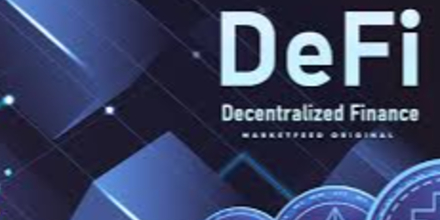Sky Protocol Receives “B-” Credit Rating from S&P Global
- S&P rates Sky Protocol “B-” due to risk factors.
- Centralization and concentrated deposits pose risks.
- Liquidity issues could impact stablecoin and governance.
S&P Global assigned Sky Protocol a ‘B-‘ credit rating due to centralization and liquidity concerns. Founder Rune Christensen’s control and concentrated deposits were highlighted, marking the first stablecoin protocol to receive a formal rating from a major agency.
Points Cover In This Article:
ToggleSky Protocol has been assigned a “ B- ” credit rating by S&P Global, citing centralization and liquidity risks. This evaluation also reflects concentrated deposits and governance control by founder Rune Christensen.
S&P Global’s rating highlights potential vulnerabilities in governance and funding impacting the DeFi and stablecoin sectors.
Evaluation of Sky Protocol
Sky Protocol, under scrutiny for its centralization and deposits, received an unprecedented credit rating from S&P Global . The decision underscores risks associated with liquidity and governance token concentration.
Governance and Stability
Founder Rune Christensen, known for his leadership in DeFi, controls 9% of governance tokens, affecting Sky Protocol’s stability. No direct response from Christensen or his team was noted, but Sky Protocol recognizes and aims to address the identified risks.
“Sky’s rating could be downgraded over the next 12 months if it experiences liquidity shortfalls, excessive losses in crypto lending, or unfavorable regulatory developments.” – S&P Global
Market Reactions and Implications
Market reactions include concerns over Sky Protocol’s capacity to handle liquidity shortfalls, given its risk-adjusted capital ratio. There are broader implications for DeFi and related investments, especially those integrated with Sky Protocol’s USDS stablecoin and governance frameworks.
S&P emphasizes the potential for liquidity issues to affect related DeFi platforms. Cybersecurity and regulatory uncertainties add to these challenges, influencing investor confidence across sectors involved.
Future outcomes may depend on Sky Protocol’s response to S&P’s findings. Historical trends suggest parallels with other DeFi liquidity events, yet none had a formal rating. This analysis may inform upcoming protocols addressing similar governance and liquidity concerns.
Disclaimer: The content of this article solely reflects the author's opinion and does not represent the platform in any capacity. This article is not intended to serve as a reference for making investment decisions.
You may also like
ETH -3337.82% in 1 Year Amid Technical Indicators Signal Bearish Momentum
- Ethereum (ETH) fell 121.69% in 24 hours to $4,590.82, reversing a 3337.82% annual surge amid sharp bearish momentum. - Technical indicators show oversold RSI (<30), negative MACD, and bearish moving average crossovers reinforcing downward pressure. - Analysts warn further declines likely without reclaiming key resistance, with $4,500 as critical support level to watch. - Proposed backtesting strategy targets short positions using RSI/50 and moving average crossovers to capitalize on sustained bearish tre

Why is DeFi crucial to the future of finance?
DeFi breaks down geographical and identity barriers, offering censorship-resistant and borderless financial tools, becoming an important supplement to the traditional system. Traditional banks have long been plagued by risks and conflicts of interest, while DeFi, through stablecoins, non-custodial wallets, and on-chain protocols, provides solutions for people affected by inflation, capital controls, and financial repression. Its transparent and permissionless architecture enhances accessibility and autonomy, driving financial innovation. In the future, finance may take on a hybrid form, with traditional institutions pragmatically integrating with decentralized infrastructure. DeFi fills the gaps in traditional systems and gradually promotes the realization of blockchain-based settlement layers.

Bitcoin's Price Volatility and Institutional Influence: Is $100,000 a Looming Threshold?
- Bitcoin's 2025 price near $111,000 reflects institutional adoption (59% of portfolios) and structural supply constraints from corporate BTC accumulation. - Institutional infrastructure (ETFs, custody solutions) and $118B ETF inflows have reduced volatility by 75% since mid-2025. - $100,000 threshold gains significance as regulatory clarity (CLARITY Act) and macroeconomic factors (U.S. debt) reinforce Bitcoin's store-of-value narrative. - Institutional buyers control 18% of supply with 10.4% increased lon

MUTM: The Undervalued Crypto Play for 2025–2027
- Mutuum Finance (MUTM) combines a dual-layer DeFi lending model with AI to address liquidity and volatility challenges, positioning it as a high-conviction 2025–2027 play. - Its P2C/P2P structure diversifies yield opportunities, while a 95/100 audit score and $50,000 bug bounty reinforce institutional-grade security. - AI integration optimizes lending protocols and plans for an AI-driven stablecoin (mtUSD) align with broader DeFi trends, enhancing efficiency and risk mitigation. - With $14.8M raised in pr
